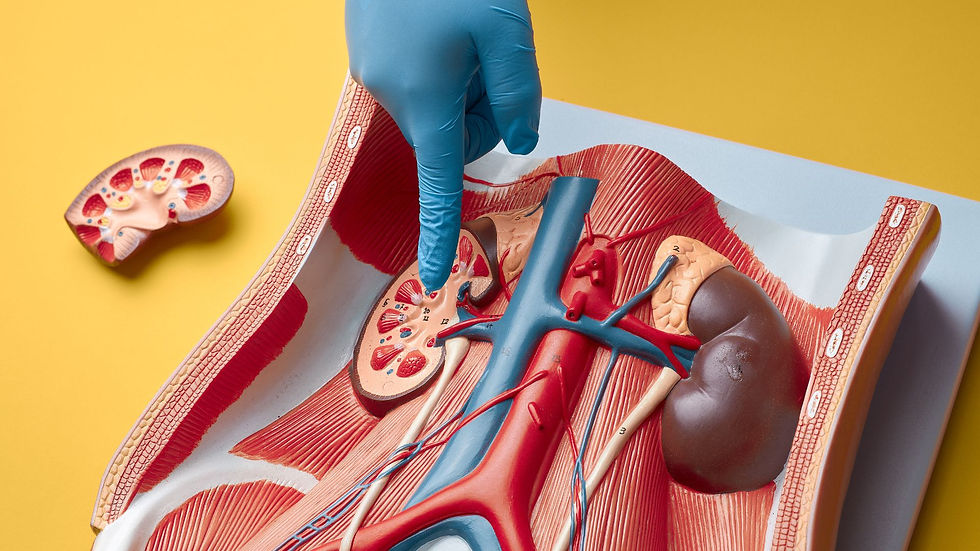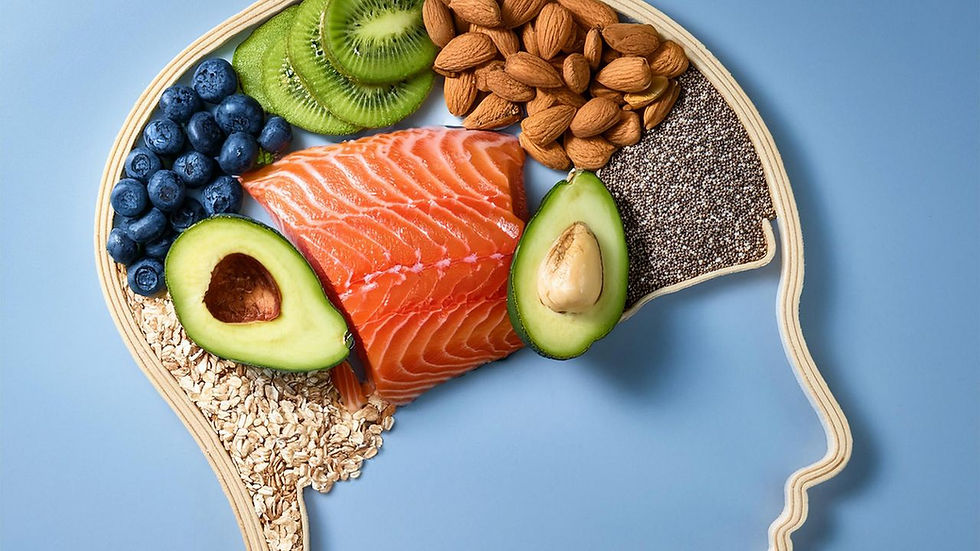What is fat?
- Daniel Smith
- Jun 27, 2022
- 3 min read
Updated: Nov 1, 2022
Following on from our previous blog about whether fat is bad for you, we are going to explore what fat is and why we need some fats.
Fats are nutrient that we get from our diets. It is essential to eat some fats, though it is also harmful to eat too much or have the wrong type.
We need fat to keep our skin and hair healthy. Fat also helps us to absorb vitamins A, D, E, and K, the fat-soluble vitamins. Fat also fills our fat cells and insulates our bodies to help keep you warm and to keep joints supple.
When we eat fats, it also gives our bodies energy to work properly. During exercise, your body uses and burns calories from carbohydrates that we have eaten. But after around 20 minutes of exercise, our bodies start to use our fat resources to keep on going. This known as the fat burn zone. It is worth noting, that if you're wanting to lose body fat, any form of exercise (walking, cycling, playing with the children) will start to burn carbohydrate before shifting to fat burning. Aim for 30 minutes of exercise to support your slim transformation goals.
The fats our bodies need are called essential fats. These are called linoleic and linolenic acid. They are called "essential" because our bodies cannot make them itself, or work without them. Our bodies needs them for brain development, controlling inflammation and blood clotting.
The types of fats
Saturated fats
Saturated fats raise your LDL (bad) cholesterol levels. High LDL cholesterol puts you at risk of heart attack, stroke and other major health problems. You should avoid or limit foods that are high in saturated fats.
Keep saturated fats to less than 6% of your total daily calories.
Foods with a lot of saturated fat are animal products such as: butter, cheese, whole milk, ice cream, cream, and fatty meats.
Some vegetable oils such as: coconut, palm and palm kernel oil, also contain saturated fats. Good way to spot these fats is to check whether they stay solid at room temperature.
Unsaturated fats
Eating unsaturated fats instead of saturated fats can help lower your LDL cholesterol. Most vegetable oils that are liquid at room temperature will have unsaturated fat. There are two kinds of unsaturated fats:
Mono-unsaturated fats, which include olive and canola oil.
Polyunsaturated fats which include safflower, sunflower, corn and soy oil.
Trans-fats
Trans-fats are unhealthy fats that form when vegetable oil goes through a process called hydrogenation. This leads the fat to harden and become solid at room temperature. Hydrogenated fats, or trans-fats, are often used to keep some foods fresh for a long time.
Trans-fats are also used for cooking in some restaurants and appear in many ready-meals. It's always a good idea to minimise eating out and focusing on preparing home cooked meals as much as possible.
You should avoid foods made with hydrogenated and partially hydrogenated oils (such as hard butter, margarine and even some of the cheaper 'value' sliced bread). They contain high levels of trans-fatty acids.
Always read the nutrition labels on foods. This will help you know what kinds of fats, and how much, your food may contain.
The top tips about fat:
Avoid saturated fat - fats that are hard at room temperature.
Check nutrition labels on food and aim to prepare home-made food as much as possible.
Exercise for around 30 minutes to enter the 'fat burning zone'.





Comments